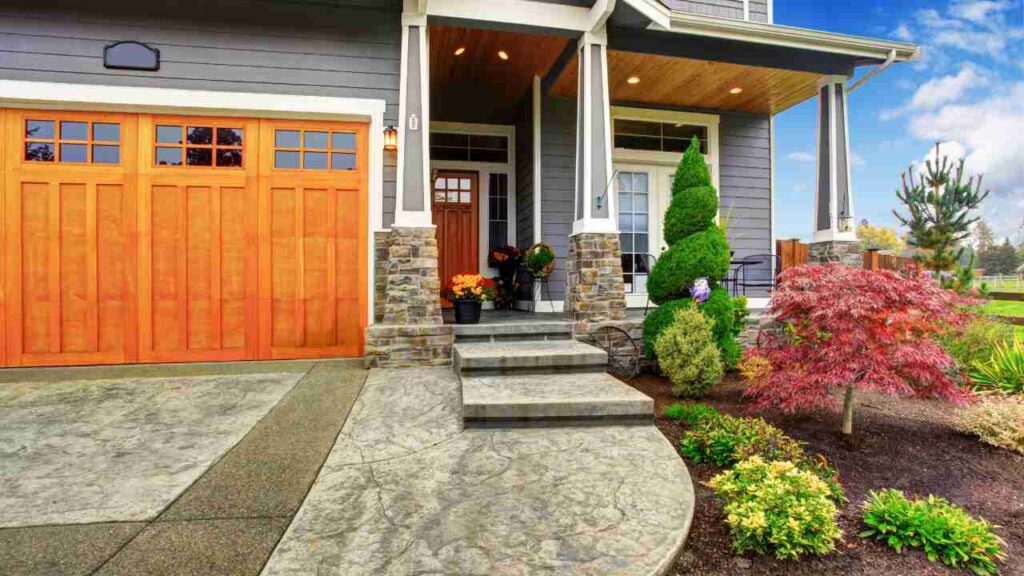How Often Should I Repaint the Exterior of My House?

A well-maintained exterior enhances your house’s curb appeal and protects it from the elements. One of the most important aspects of exterior maintenance is repainting. However, determining the ideal frequency for repainting your house can be a bit perplexing. Factors such as climate, quality of previous paintwork, and the type of materials used all play a role in deciding how often you should repaint. We will explore these factors in detail and provide guidelines to help you determine the optimal timeframe for repainting your house.
Factor to consider when you should repaint your home
1. Climate Considerations
The climate in which your house is located recreates a significant role in determining the frequency of repainting. Harsh weather conditions, such as intense sunlight, heavy rain, or extreme temperature variations, can cause paint to deteriorate faster. If you reside in a mild climate with relatively stable weather throughout the year, you can go longer between repaints. Nevertheless, if your region encounters severe weather conditions, it’s paramount to repaint more frequently to maintain the protective barrier of your house.
2. Quality of Previous Paintwork
The quality of the previous paintwork on your house is another crucial factor to consider. High-quality paints with proper surface preparation and application tend to last longer, mandating less frequent repainting. On the other hand, if the previous paint job was of subpar quality or had issues such as peeling, cracking, or fading, you may need to repaint sooner. Regularly inspect your house’s exterior for any signs of paint deterioration and address them promptly to avoid more significant problems.
3. Type of Materials
The type of materials used in the construction of your house also impacts the frequency of repainting. Different materials have irregular levels of durability and mandate specific maintenance. For instance, wood surfaces demand more frequent repainting than stucco or brick. Additionally, certain types of siding, such as vinyl, may not require repainting, as they are designed to retain their color for extended periods. It’s crucial to consult the manufacturer’s recommendations for the explicit material used on your house to determine the appropriate repainting schedule.
4. Signs that Repainting is Needed
While there are general guidelines for repainting, it’s equally essential to be vigilant for signs that indicate when repainting is necessary. Some common symptoms include noticeable fading, cracking, peeling, or chalking of the existing paint. If you notice any of these issues, it’s advisable to repaint them promptly to prevent further damage to your house’s exterior. Regularly cleaning your house’s body can also help pinpoint areas that may mandate repainting due to accumulated dirt or grime.
5. Professional Advice
Seeking professional advice is always beneficial when determining the repainting schedule for your house. Local painting contractors or color consultants can evaluate your situation, considering climate, previous paint quality, and material types. They can furnish tailored recommendations based on their expertise, helping you decide when to repaint your house.
Maintaining the exterior of your house through regular repainting is essential for its appearance and protection. The ideal frequency for repainting depends on several factors, including climate, quality of previous paintwork, and the type of materials utilized. By evaluating these factors and monitoring signs of paint deterioration, you can determine the appropriate timeframe for repainting. Seeking professional advice is always helpful, as painters in Phoenix can provide valuable insights about your situation. By proactively repainting, you can ensure that your house remains attractive and well-protected for years to come.
How to choose the paint for your home?
Selecting the right paint for your home is paramount to achieving the desired aesthetic appeal and durability. Here are some elements to contemplate when choosing paint for your home:
- Determine the Purpose: Evaluate the purpose of the painted surface. Diverse zones of your home may mandate distinct sorts of paint. For instance, high-traffic areas like hallways or children’s rooms may benefit from a more durable and washable paint. In contrast, a bedroom or living room may prioritize a finish that delivers a smooth and elegant look.
- Select the Finish: Paint finishes range from flat to high gloss. Each finish has sheen, durability, and ease of cleaning. Common finishes include flat (matte), eggshell, satin, semi-gloss, and high gloss. Flat finishes supply a non-reflective appearance but are less resistant to stains, while high-gloss finishes present a shiny and durable surface but may highlight imperfections.
- Consider the Room’s Lighting: The lighting in a room can affect how paint colors appear. Natural light and artificial lighting can influence the perception of color. Testing paint samples in different lighting conditions is advisable to ensure you achieve the desired effect.
- Evaluate the Color Scheme: Consider the existing color scheme or the one you plan to create in your home. Choose paint colors that complement the furniture, flooring, and overall design aesthetic. Paint samples on the wall and observe them in different lighting to see how they interact with the surroundings.
- Assess Paint Quality: High-quality paint will deliver better coverage, durability, and color retention. Scrutinize for reputable paint brands known for their quality and longevity. Check for labels exhibiting properties such as washability, resistance to fading or mildew, and suitability for specific surfaces.



